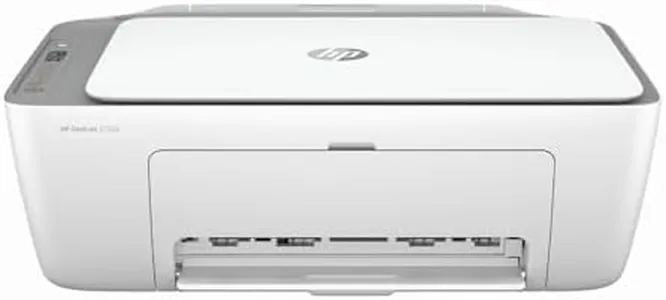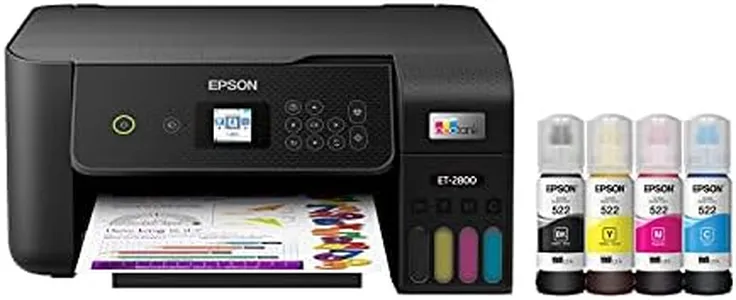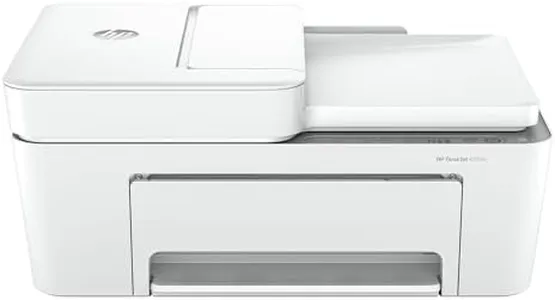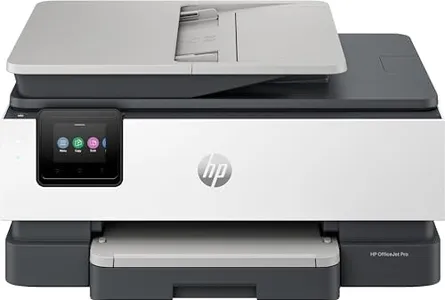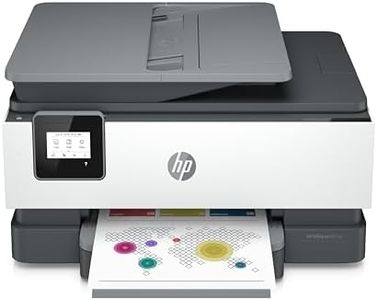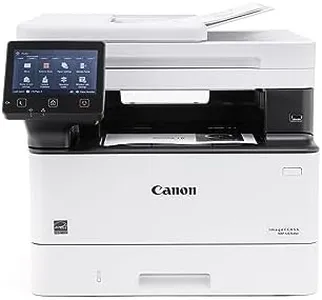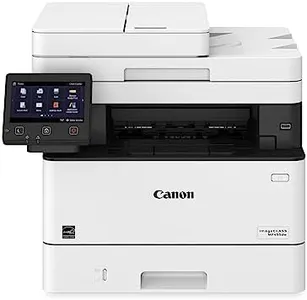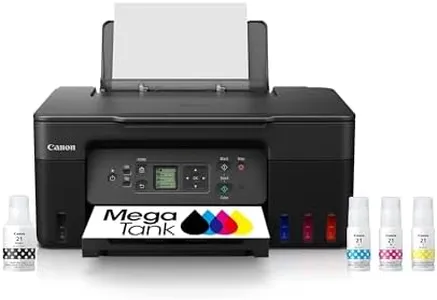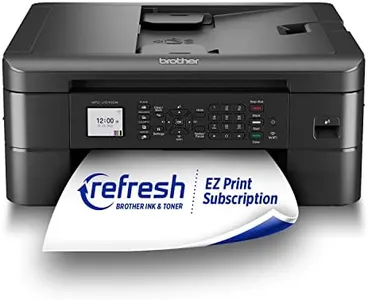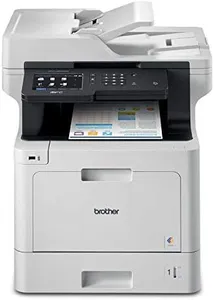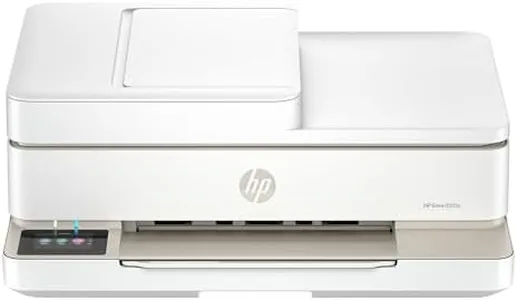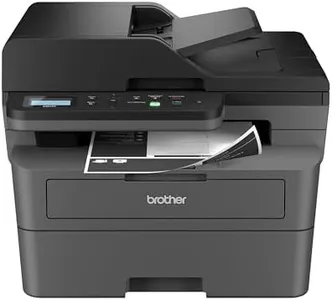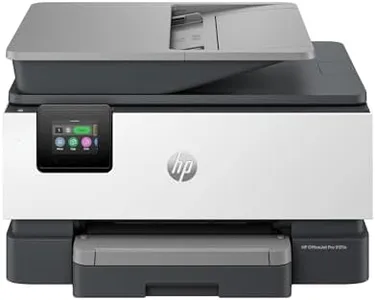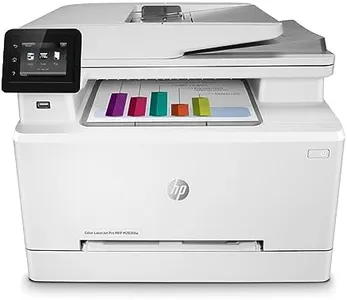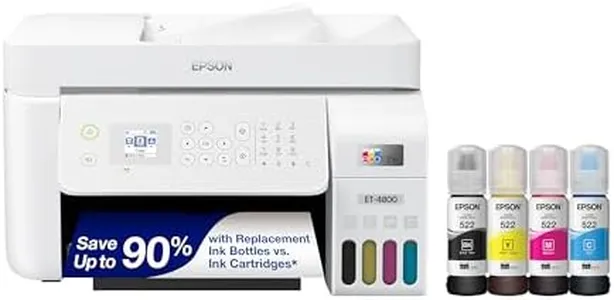We Use CookiesWe use cookies to enhance the security, performance,
functionality and for analytical and promotional activities. By continuing to browse this site you
are agreeing to our privacy policy
10 Best Multi Function Printers 2025 in the United States
How do we rank products for you?
Our technology thoroughly searches through the online shopping world, reviewing hundreds of sites. We then process and analyze this information, updating in real-time to bring you the latest top-rated products. This way, you always get the best and most current options available.

Buying Guide for the Best Multi Function Printers
When choosing a multi-function printer (MFP), it's important to consider your specific needs and how the printer will be used. MFPs combine printing, scanning, copying, and sometimes faxing into one device, making them versatile and convenient for both home and office use. To find the best fit for you, you'll need to evaluate several key specifications and features. Understanding these specs will help you make an informed decision and ensure that the printer you choose meets your requirements.Print SpeedPrint speed is measured in pages per minute (PPM) and indicates how quickly a printer can produce documents. This spec is important if you need to print large volumes of documents regularly. For light home use, a print speed of 10-20 PPM is usually sufficient. For small offices or more frequent printing, look for speeds of 20-30 PPM. For high-volume environments, such as large offices, a print speed of 30 PPM or higher is ideal. Consider your typical printing needs to determine the right print speed for you.
Print QualityPrint quality is measured in dots per inch (DPI) and determines the clarity and detail of printed documents and images. Higher DPI values result in sharper and more detailed prints. For general document printing, a DPI of 600x600 is usually adequate. If you need to print high-quality images or graphics, look for a printer with a DPI of 1200x1200 or higher. Assess the type of documents you will be printing most often to choose the appropriate print quality.
Connectivity OptionsConnectivity options refer to the ways you can connect your printer to other devices. Common options include USB, Wi-Fi, Ethernet, and Bluetooth. USB connections are straightforward and reliable for direct connections to a single computer. Wi-Fi and Ethernet allow for network printing, which is useful in multi-user environments. Bluetooth enables easy printing from mobile devices. Consider how you plan to connect to the printer and choose one with the appropriate connectivity options for your setup.
Paper HandlingPaper handling refers to the types and sizes of paper a printer can accommodate, as well as its paper tray capacity. This spec is important if you need to print on different media types, such as envelopes, labels, or cardstock. For basic home use, a standard paper tray capacity of 100-150 sheets is usually sufficient. For office use, look for a printer with a larger capacity, such as 250-500 sheets, to reduce the frequency of paper refills. Consider the types of documents you will be printing and the volume to determine the right paper handling capabilities.
Scanning FeaturesScanning features include the resolution, speed, and capabilities of the scanner. Resolution is measured in DPI and affects the clarity of scanned images. For general document scanning, a resolution of 300 DPI is usually sufficient. For high-quality image scanning, look for a resolution of 600 DPI or higher. Some MFPs offer additional features like automatic document feeders (ADF) for scanning multiple pages at once, and duplex scanning for double-sided documents. Consider your scanning needs to choose the right features.
Operating CostsOperating costs include the price of replacement ink or toner cartridges and the printer's energy consumption. This spec is important for understanding the long-term expenses associated with the printer. Inkjet printers typically have lower upfront costs but higher per-page printing costs, while laser printers have higher upfront costs but lower per-page costs. Consider how often you will be printing and the cost of consumables to determine the most cost-effective option for you.
Additional FeaturesAdditional features can enhance the functionality and convenience of a multi-function printer. These may include duplex printing (automatic double-sided printing), touchscreens, mobile printing capabilities, and cloud printing services. Duplex printing can save paper and reduce costs, while touchscreens can make the printer easier to use. Mobile and cloud printing allow for greater flexibility in how and where you print. Consider which additional features are important to you and how they will improve your printing experience.
Most Popular Categories Right Now
